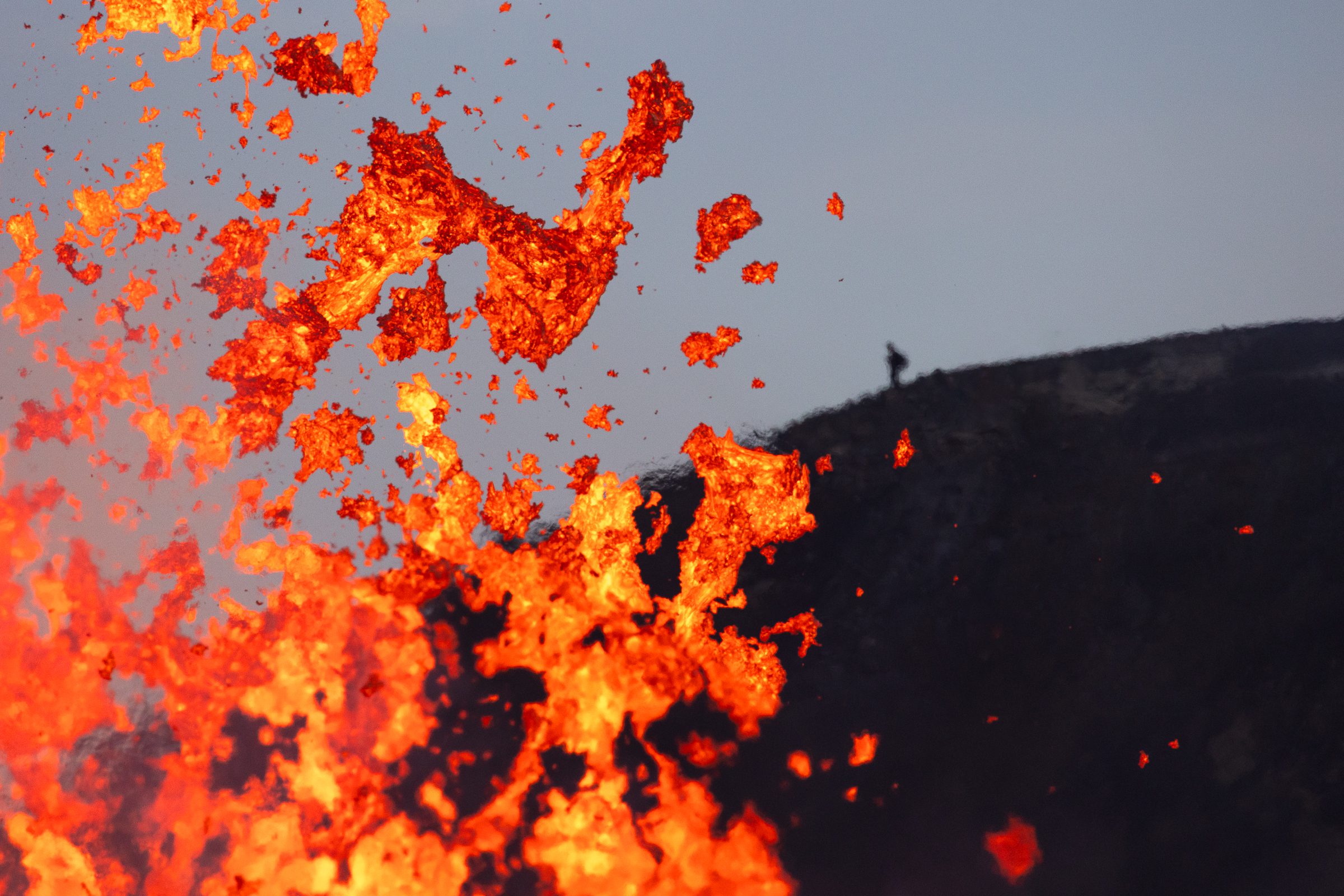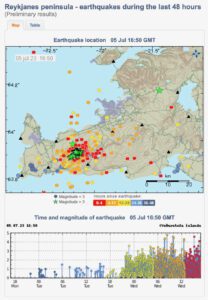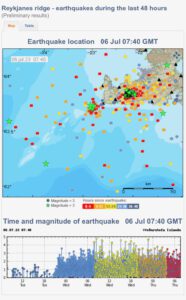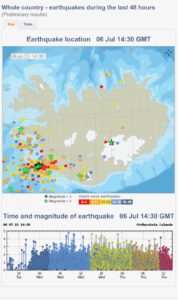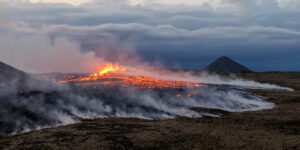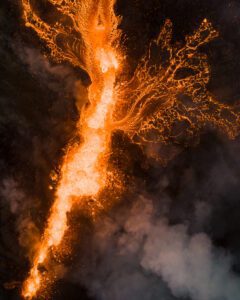To celebrate the one year anniversary of the third volcanic eruption of the Fagradalsfjall volcanic system at Litli-Hrútur, I decided to create a timeline showing all the events which happened during this eruption. It’s by no means meant as a geological or scientific account of things but more as a visual guideline and memento dedicated to this incredible experience. It’s combined with some of my favourite photographs taken during this eruption. Enjoy!
July 4th 2023 - An Earthquake Swarm Begins
After the Geldingadalir and Meradalir eruptions it seemed as if we were just waiting for another chapter to begin. Only ten months later, Reykjanes was once again the center of attention in Iceland. On July 4th 2023, a new intense earthquake swarm began, indicating Fagradalsfjall was ready to wake up. A new magma intrusion began forming which created a lot of new seismicity. The earthquake swarm leading up to the eruption measured no less than 12000 earthquakes.
On Sunday July 9th 2023, a large earthquake with magnitude 5.2 occurred in the area of the intrusion after which most seismicity died down until the eruption began less than 24 hours later.
Source: Veðurstofa Íslands
July 10th 2023 - The Eruption Begins
The eruption at Litli-Hrútur began in the afternoon of July 10th 2023 when an echelon of different fissures opened up over a length of about one kilometre between Keilir and Litli-Hrútur. The initial lava output was much greater than the previous two eruptions at Fagradalsfjall with a rough output of 50 cubic metres per second. An immediate concern at the time was volcanic gas, which meant that access to the site was much more strictly controlled compared to the two previous eruptions at Fagradalsfjall
Because of its location, the lava field quickly began expanding towards the south as the older lava field was a slight downward slope in that direction. Eventually, it linked up with the lava fields of the Geldingadalir and Meradalir eruptions, forming one large lava field.
After the first day of the Litli-Hrútur eruption, the lava output slowed down to an average of 13 cubic metres per second, putting it more in line with the previous Fagradalsfjall eruptions. Very quickly, the activity condensed into one 200 metre long fissure which quickly began forming a large crater.
During the eruption, wildfires were a very big concern for authorities. Due to the dry weather, all of the moss around the eruption area began igniting which created one of the largest wildfires seen in Iceland. This was the primary reason why authorities closed down the area for multiple days. This gave them the time to try and get control over the fires. Because of the location, supplying water in sufficient quantities was a significant challenge.
While initially a large lava flow ran out of the crater towards the south, and at one point into a lava lake on the western side, it eventually began burying itself into a lava tube. By July 23rd, all of the flowing lava remained inside that lava tube under the surface of the new lava field. The only visible activity from that point onwards was inside the crater. Gradually the activity inside the crater began slowing down until the eruption eventually stopped.
August 5th 2023 - The Last Day of Visible Activity
Unlike previous eruptions, authorities didn’t wait for three months until this eruption was declared over, which was likely based on how previous eruptions behaved in this area.
New Earth: My Book About the Eruption
In December 2021, I self-published a book about the eruption in Geldingadalir “New Earth” became a uniquely personal, photography- and experience-focused book covering the recent volcanic eruption in Geldingadalir from the first until the last day it was active.
What People Are Saying About New Earth
“This has to be the ‘go to’ book on a crazy last 9 months in an even crazier country. The photography is incredible but the words that go with it is where Jeroen has taken it to the next level.” – Jacob
“It is excellent how it captures the feelings, moments and thoughts that also I had during the time at the volcano.” – Glacionaut
“I kept saying “wow” throughout! A fantastic book for anyone who visited Geldingadalir, wanted to but couldn’t, or anyone with a passion for volcanoes who’d appreciate witnessing the story of this incredible eruption. Magical!” – Lesley
“Highly recommended from someone who has had the chance to experience over 15 volcano eruptions and owns 45 books about volcanoes, so I can safely say that I can distinguish the wheat from the chaff.” – John
The Fagradalsfjall Fires
Because there have been two eruptions at Fagradalsfjall in such a short time, people have started calling them the Fagradalsfjall Fires (Fagradalsfjallseldar). This homage to the Fagradalsfjall Fires is a collection of video footage made during the two eruptions at the Fagradalsfjall volcano in Iceland. This footage has been captured over the course of 7 months during both the Geldingadalir and Meradalir eruptions in 2021 and 2022.
Support Jeroen’s Work
As an independent photographer, Jeroen partially relies on your support to keep producing worthwhile content such as blogs, photographs, books and much more. If you want to support his work, it is possible to do so by buying his e-books & books or prints.
You can also sign up to the newsletter to stay up to date on new blog posts, projects, workshops and other interesting information.
Thank you for considering!

